
Color is one of the most fascinating aspects of our visual perception, influencing our emotions, behaviors, and even physiological responses. However, the way colors appear to us is not solely determined by the light that reaches our eyes; it is also heavily influenced by the materials that reflect, absorb, or transmit that light. Understanding how different materials interact with color requires delving into the realms of material science, optics, and human perception.
In this article, we embark on a journey to explore the intricate relationship between materials and color.

1*.The Basics of Color Perception:
Before delving into the specifics of how materials interact with color, it’s essential to understand the basics of color perception. Color is a perceptual phenomenon resulting from the way our eyes and brain interpret different wavelengths of light. The human eye contains specialized cells called cones that are sensitive to three primary colors: red, green, and blue. These cones send signals to the brain, which then processes them to create the sensation of color.
Exploring the Intricacies of Material Science and Perception
Certainly! Let’s dive deeper into the intricacies of color perception.
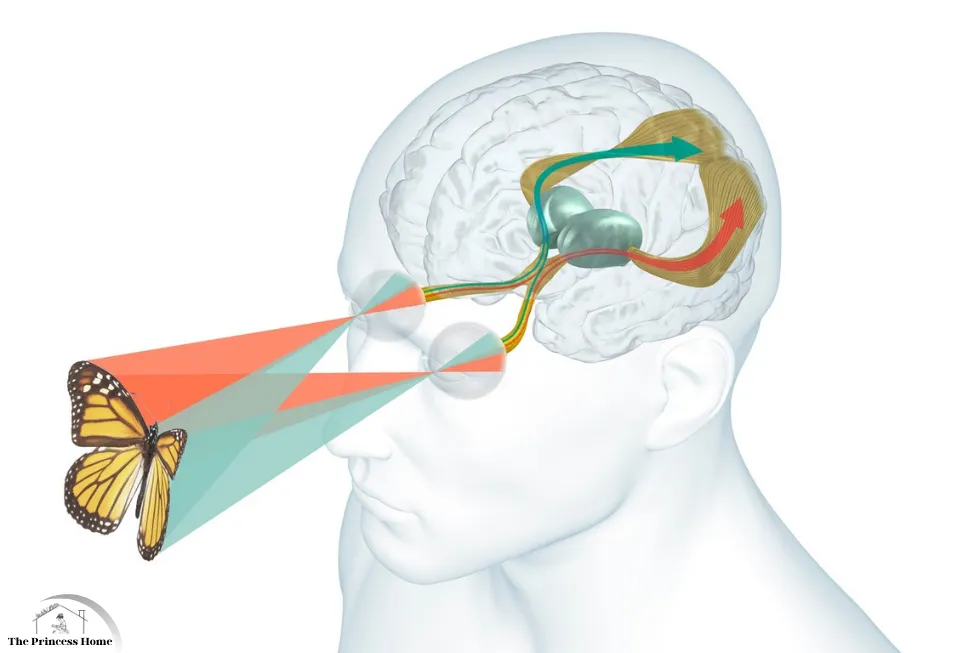
Color perception begins with light. When light encounters an object, some wavelengths are absorbed, and others are reflected. It’s these reflected wavelengths that enter our eyes and initiate the process of perception.
1.Understanding Color Perception
Color perception is a complex interplay between the physiology of the human eye and the processing capabilities of the brain. Within the retina, a delicate network of photoreceptor cells serves as the gateway for capturing light and translating it into visual signals. Among these photoreceptors, cones and rods play distinct roles in shaping our perception of color and brightness.
2.Cones and Rods:
The Architects of Vision
Rods, specialized photoreceptor cells abundant in the retina, excel in low-light conditions and facilitate vision in dim environments. However, they contribute minimally to color perception, primarily conveying information about brightness and contrast.
Cones, on the other hand, are the workhorses of color vision. These cone-shaped photoreceptors are sensitive to different ranges of wavelengths, allowing them to discern colors across the visible spectrum. The human eye contains three types of cones, each tuned to specific wavelengths: red, green, and blue.
3.The Complexity of Color Perception
The distribution of cones across the retina varies, with differing densities in different regions. This arrangement allows for precise color discrimination and sensitivity to variations in light intensity. However, our perception of color goes beyond the individual activity of cones. It’s the intricate interplay between different types of cones and the neural processing in the brain that enables us to perceive a rich tapestry of colors.
For example, the brain interprets signals from both red and green cones as the color yellow, demonstrating how combinations of cone activity contribute to color perception. Similarly, signals from red and blue cones are perceived as purple, showcasing the brain’s ability to integrate information from multiple sources.
4.Neural Processing:
The Color Symphony
Once captured by cones, visual signals are transmitted via the optic nerve to the brain’s visual cortex for processing. Here, a symphony of neural networks orchestrates the interpretation of color information, integrating details about the intensity and distribution of light across the spectrum.
This intricate processing enables us to perceive subtle variations in color and distinguish between millions of hues. However, color perception is not solely determined by physiological factors. Environmental influences, such as lighting conditions and surrounding colors, as well as individual differences in cone sensitivity, can shape our perception of color. Additionally, cultural and contextual factors play a role in how we interpret and assign meaning to different colors.
In summary, color perception is a remarkable interplay between the physics of light and the complex neural processing in our brains. It’s a fascinating subject that continues to intrigue scientists and artists alike, as we strive to unravel the mysteries of how we experience the world in color.
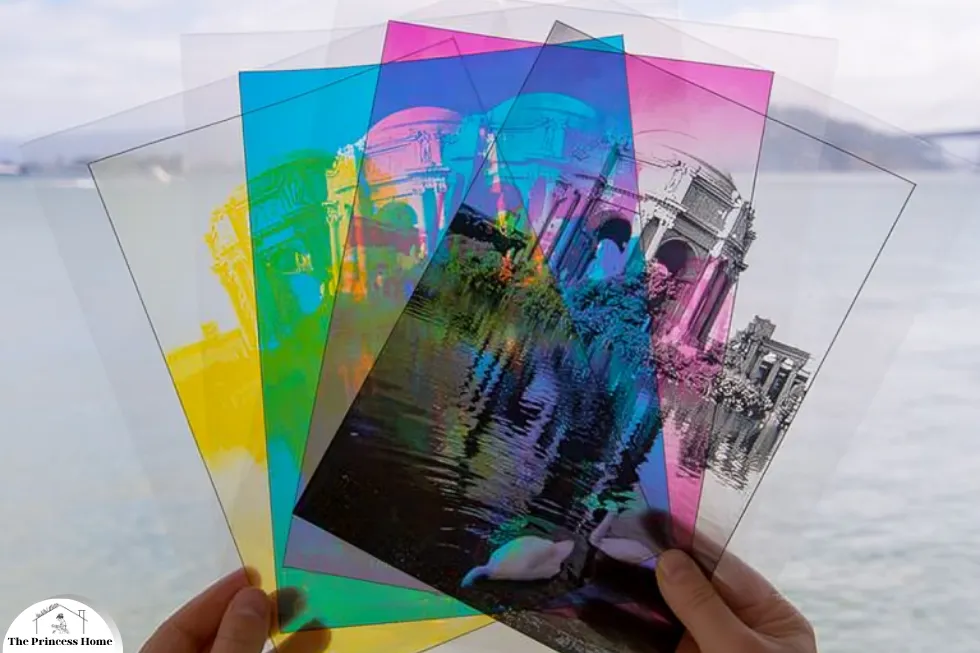
2*.Reflection and Absorption:
When light strikes a material, it can either be reflected, absorbed, or transmitted. Reflection occurs when light bounces off the surface of a material without being absorbed. The color we perceive is determined by the wavelengths of light that are reflected back to our eyes. For example, a red apple appears red because it reflects red light and absorbs other wavelengths. On the other hand, absorption occurs when light is absorbed by the material, leading to a reduction in the intensity of certain wavelengths. The absorbed wavelengths contribute to the material’s color, while the remaining wavelengths are either reflected or transmitted.
Exactly! The interaction between light and materials through reflection and absorption is crucial in determining the colors we perceive.
When light strikes a surface, some of it is bounced back, creating the sensation of color through reflection. This reflected light is what we perceive with our eyes. Different materials reflect different wavelengths of light, which is why we see a variety of colors in the world around us. For instance, a blue shirt appears blue because it reflects predominantly blue wavelengths of light while absorbing other wavelengths.
On the other hand, absorption happens when the material absorbs certain wavelengths of light, preventing their reflection back. The absorbed wavelengths then contribute to the material’s color, while the remaining wavelengths are either reflected or transmitted. For instance, a black shirt looks black because it absorbs most wavelengths of light across the visible spectrum, reflecting very little back to our eyes.
Understanding these principles of reflection and absorption is essential in various fields, from art and design to materials science and optics. By manipulating how materials interact with light, we can create a wide range of colors and visual effects, contributing to the richness and diversity of our visual experiences.
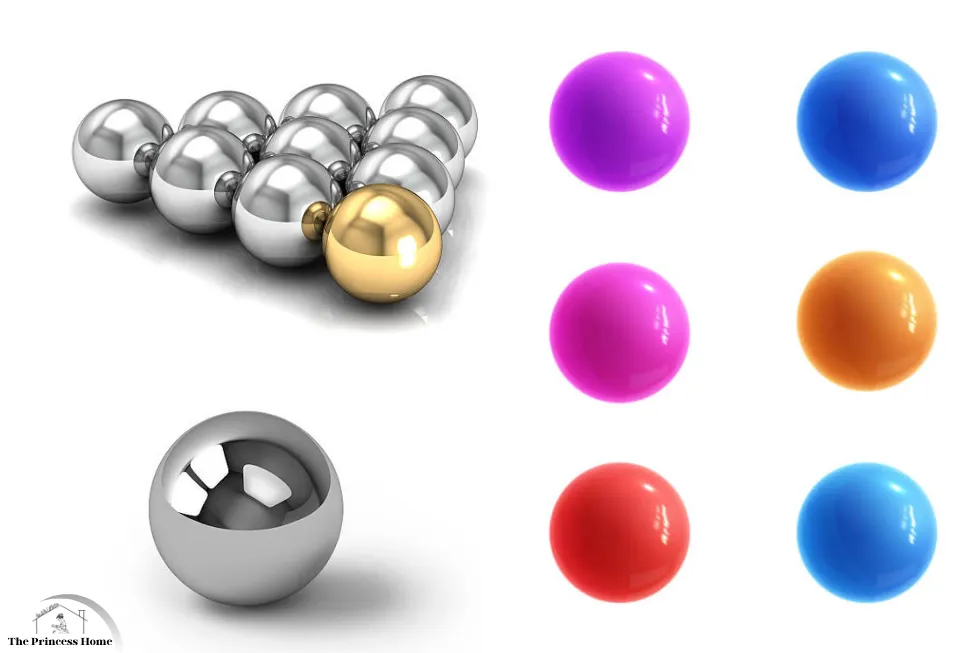
3*.Influence of Material Properties:
Material properties heavily influence the interaction between light and materials, including factors such as chemical composition, surface texture, and structure. For example, metallic materials showcase unique optical properties because of the presence of free electrons that interact with light. This interaction typically leads to specular reflection, where light reflects in a single direction, imparting metals with their characteristic luster. In contrast, non-metallic materials like textiles or plastics might display diffuse reflection, scattering light in various directions due to surface irregularities.
Absolutely, the properties of materials play a significant role in how they interact with light, influencing the perception of color and visual appearance.
1.Unveiling Optical Behaviors of Materials
Materials exhibit a fascinating array of optical behaviors, influenced by their chemical composition, molecular structure, and surface properties. Understanding these characteristics is crucial for designing materials with desired optical effects and appearances.
2.Metallic Brilliance:
Specular Reflection
Metallic materials, renowned for their lustrous surfaces, owe their brilliance to a unique optical phenomenon known as specular reflection. Unlike non-metallic materials, metals boast an abundance of free electrons that readily interact with incoming light waves. This interaction results in light being reflected in a single direction, akin to the pristine reflection seen in a mirror. The characteristic shiny and reflective surfaces of metals, such as silver and gold, are manifestations of this specular reflection, contributing to their allure and aesthetic appeal.
3.Non-Metallic Subtlety:
Diffuse Reflection
In stark contrast, non-metallic materials, such as textiles and plastics, lack the surplus of free electrons found in metals. Instead, their optical properties are shaped by surface texture and irregularities. When light strikes these materials, it encounters microscopic surface features that scatter light in various directions, giving rise to diffuse reflection. Unlike the sharp, mirror-like reflection seen in metals, diffuse reflection creates a soft and muted appearance, devoid of pronounced glossiness. This scattering of light contributes to the understated elegance and non-reflective nature of non-metallic materials.
4.Molecular Magic:
Influence of Chemical Composition
Beyond surface properties, the chemical composition and molecular structure of materials wield significant influence over their optical properties. Pigments and dyes embedded within a material selectively absorb certain wavelengths of light, imparting distinct colors to the material. The arrangement of molecules within a material further dictates how light interacts with it, determining factors such as light transmission, absorption, and reflection. Whether creating vibrant hues or subtle tones, the molecular composition of materials plays a pivotal role in shaping their visual appearance.
5.Innovative Applications:
Harnessing Optical Properties
Understanding the interplay between material properties and light interaction empowers designers and engineers to explore myriad applications across diverse fields. From product design and architecture to photography and beyond, these professionals can leverage these properties to craft materials with specific optical characteristics. By tailoring material composition, surface texture, and molecular structure, they can create innovative and visually appealing products and environments, enriching our sensory experiences and pushing the boundaries of design and aesthetics.
In summary, the optical behaviors of materials offer a captivating glimpse into the intricate interplay between light and matter. From the gleaming brilliance of metals to the subtle elegance of non-metallic surfaces, each material tells a unique optical story, shaped by its inherent properties and structural intricacies. Embracing this understanding unlocks boundless opportunities for creativity and innovation, fueling advancements across various disciplines and enriching our visual landscape.

4*.Pigments and Dyes:
Substances such as pigments and dyes impart color to materials by selectively absorbing certain wavelengths of light. Pigments, insoluble particles dispersed within a material, and dyes, soluble molecules that penetrate the material’s surface, both absorb specific wavelengths of light and reflect or transmit the remaining wavelengths. The selection between pigment or dye can notably affect the perceived color of a material, along with its durability and lightfastness.
Understanding the properties of pigments and dyes is crucial for achieving desired color effects and durability in materials.
1.Pigments vs. Dyes:
Unraveling the Coloring Conundrum
In the realm of coloration, pigments and dyes reign supreme as the go-to agents for imbuing materials with vibrant hues. However, these two colorants operate on distinct principles, each offering unique advantages and applications.
2.Pigments:
The Solid Stars of Color
Pigments, revered for their versatility and resilience, finely grind insoluble particles dispersed within a material matrix. Whether in paints, inks, or plastics, pigments perform their magic by selectively absorbing specific wavelengths of light while reflecting or transmitting others. The resulting coloration arises from the wavelengths absorbed and those reflected or transmitted. For instance, a red pigment absorbs green and blue wavelengths, reflecting red light and imparting upon us the perception of crimson.
3.Dyes:
Dissolving into Color
In contrast, dyes take a more fluid approach to coloring materials. These soluble molecules permeate the material’s surface, dissolving into it and dispersing color through molecular infusion. Like their pigment counterparts, dyes selectively absorb certain wavelengths of light. However, their dissolution into the material ensures a more uniform and translucent coloration, ideal for applications where color penetration and diffusion are paramount. Textiles, paper, and other materials benefit from the deeper color saturation and blending facilitated by dyes.
4.Choosing the Right Colorant:
Factors to Consider
The choice between pigments and dyes hinges on several critical factors, including color intensity, transparency, and application method. Pigments excel in providing opacity and durability, making them indispensable for applications requiring long-lasting and vibrant coloration. Think exterior paints or automotive coatings, where durability is non-negotiable. Conversely, dyes shine in scenarios where transparency and color blending take center stage, such as inks for printing or fabric dyeing.
5.Beyond Color:
Considerations for Longevity and Stability
In the pursuit of lasting coloration, considerations extend beyond mere vibrancy to factors like lightfastness and chemical stability. Lightfastness, a measure of a colorant’s ability to resist fading or discoloration when exposed to light over time, is a crucial metric for both pigments and dyes. High-quality formulations of pigments and dyes are engineered to withstand the relentless assault of sunlight and environmental factors, ensuring that colors retain their intensity and stability for the long haul.
In essence, the choice between pigments and dyes is a delicate balancing act, dictated by the specific requirements of the application at hand. Whether seeking enduring vibrancy or seamless blending, understanding the unique characteristics and capabilities of pigments and dyes is essential for achieving the desired coloration and longevity in a myriad of materials and products.
Overall, pigments and dyes play a vital role in the coloration of materials, offering versatility and customization options for a wide range of applications across industries.
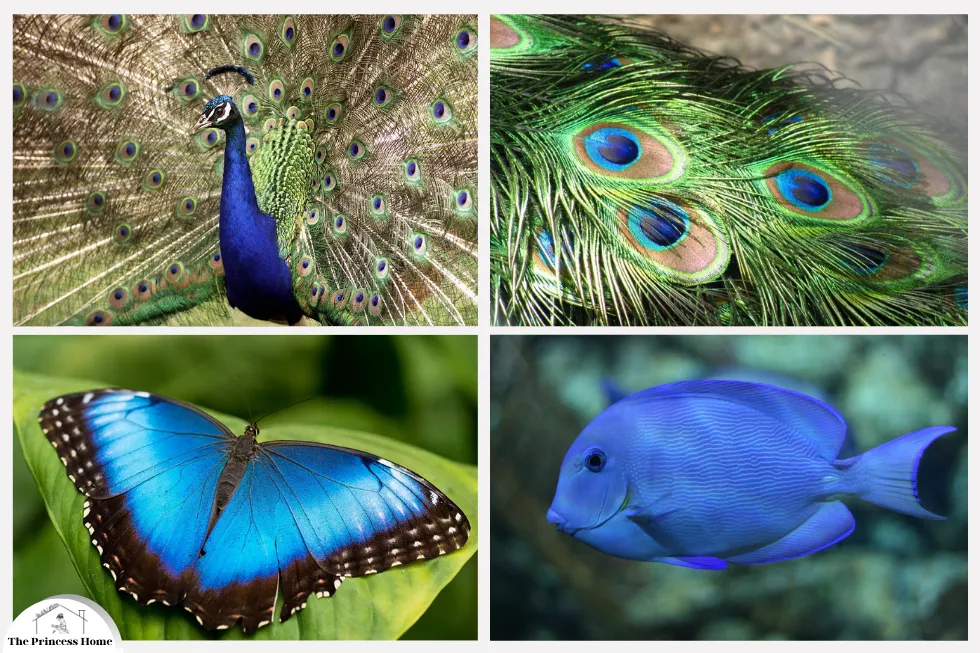
5*.Structural Coloration:
In addition to pigments and dyes, some materials derive their color from their physical structure rather than chemical composition. This phenomenon, known as structural coloration, is prevalent in nature and can be observed in the vibrant hues of butterfly wings, bird feathers, and certain marine organisms. Structural coloration occurs when microscopic structures within the material interact with light, causing interference or diffraction effects that selectively amplify certain wavelengths. Unlike pigments and dyes, structural colors are often iridescent and can change depending on the viewing angle or lighting conditions.
Structural coloration showcases nature’s ingenuity by creating vibrant colors without pigments or dyes.
1.Structural Coloration:
Nature’s Artistry Unveiled
In the world of color, nature often takes a different approach, bypassing pigments and dyes to create stunning hues through structural coloration. This captivating phenomenon arises from the intricate interplay between light and the physical structure of materials, giving rise to a kaleidoscope of colors without the need for traditional colorants.
2.Mechanisms of Structural Coloration
Structural coloration encompasses a variety of mechanisms, each contributing to the mesmerizing array of colors observed in nature. These mechanisms include interference, diffraction, and scattering of light by microscopic structures within the material.
3.Thin-Film Interference:
Painting with Light
One common mechanism of structural coloration is thin-film interference, a phenomenon where light waves interact with thin layers of materials possessing different refractive indices. As light passes through these layers, it undergoes reflection and refraction, leading to constructive or destructive interference of specific wavelengths. The result is the perception of distinct colors. A prime example of thin-film interference is the iridescent hues found in butterfly wings, created by thin layers of chitin or cuticle arranged in intricate patterns that manipulate light in dazzling ways.
4.Diffraction:
The Dance of Light
Another mechanism at play in structural coloration is diffraction, where light waves are scattered or diffracted by periodic structures within the material. This scattering of light produces vivid colors through constructive interference of specific wavelengths. Peacock feathers exemplify this phenomenon, with microscopic structures known as photonic crystals diffracting light to create an iridescent display that captivates the eye.
5.Dynamic Beauty:
The Iridescent Allure
Structural colors are renowned for their iridescence, a quality that imbues them with a shimmering or changing appearance as the viewing angle or lighting conditions shift. This dynamic nature adds to their visual allure and complexity, making them a spectacle to behold in both natural and artificial settings.
6.From Nature to Innovation:
Inspiring New Frontiers
Understanding the principles of structural coloration not only unveils the fascinating ways in which living organisms produce color but also sparks inspiration for innovation in materials science and technology. Researchers and engineers are increasingly turning to biomimetic approaches to mimic and harness the vibrant colors and optical effects observed in nature. From displays and sensors to coatings and beyond, the potential applications of structural coloration are vast and diverse, offering a tantalizing glimpse into the future of coloration and optical engineering.
In essence, structural coloration serves as a testament to nature’s ingenuity, showcasing the extraordinary beauty and complexity that can arise from the simplest of physical structures. By embracing these principles, we unlock new avenues for creativity and innovation, paving the way for a technicolor world where imagination knows no bounds.

6*.Advanced Materials &Nanotechnology:
Recent advancements in material science and nanotechnology have led to the development of novel materials with unique optical properties. For example, metamaterials are engineered materials designed to exhibit properties not found in natural materials, such as negative refractive index or cloaking abilities. These materials hold promise for applications in optics, photonics, and display technologies, where precise control over light-matter interactions is essential.
Recent advances in material science and nanotechnology.
Metamaterials exemplify this innovation. Engineers design these materials to exhibit properties uncommon in nature by arranging nanostructures in specific patterns. Metamaterials can manipulate light in ways beyond the capabilities of natural materials. For example, some can exhibit a negative refractive index, enabling them to bend light opposite to conventional materials. This property pioneers new methods for controlling and manipulating light at the nanoscale, with significant implications for optics, photonics, and telecommunications.

Nanotechnology Illuminates Optics:
Unveiling New Frontiers
The marriage of material science and nanotechnology has birthed a realm of possibilities in optical engineering, where innovations promise to redefine the boundaries of light manipulation and utilization.
Plasmonic Marvels:
Harnessing Collective Oscillations
Plasmonics, a burgeoning field within nanotechnology, delves into the manipulation of surface plasmons – collective oscillations of electrons on the surface of metallic nanoparticles. Plasmonic materials, endowed with this remarkable property, possess the ability to concentrate light into nanoscale volumes. This concentration of light facilitates enhanced light-matter interactions, giving rise to a host of applications, including ultra-sensitive sensors, efficient photovoltaic devices, and high-resolution imaging techniques.
Tailored Optical Properties:
Engineering Nanostructures
Nanotechnology empowers researchers to engineer nanostructures with meticulously tailored optical properties. Photonic crystals and nanostructured surfaces, crafted with precision at the nanoscale, wield the power to control the propagation of light. These nanostructures orchestrate effects such as photonic bandgaps and enhanced light absorption, holding immense promise for applications in solar energy harvesting, optical sensing, and information processing.
Precision Fabrication:
Shrinking Dimensions, Expanding Horizons
Advancements in nanofabrication techniques have ushered in a new era of precision and scalability in the creation of nanostructures. Techniques like electron beam lithography and atomic layer deposition empower researchers to fashion complex nanostructures with unprecedented accuracy and intricacy. With feature sizes dwindling to the order of nanometers, these techniques pave the way for next-generation optical and photonic technologies, unlocking realms of possibility previously deemed unattainable.
A Tapestry of Applications:
Transforming Industries
In summary, the convergence of material science and nanotechnology heralds a new dawn in optical engineering. From metamaterials with exotic properties to plasmonic materials and nanostructured surfaces, these advanced materials offer a myriad of opportunities for revolutionizing diverse applications. Whether in telecommunications, imaging, sensing, or renewable energy, the integration of nanotechnology promises to illuminate our world with unprecedented clarity and efficacy, propelling us towards a future where the boundaries of light manipulation are bound only by imagination.
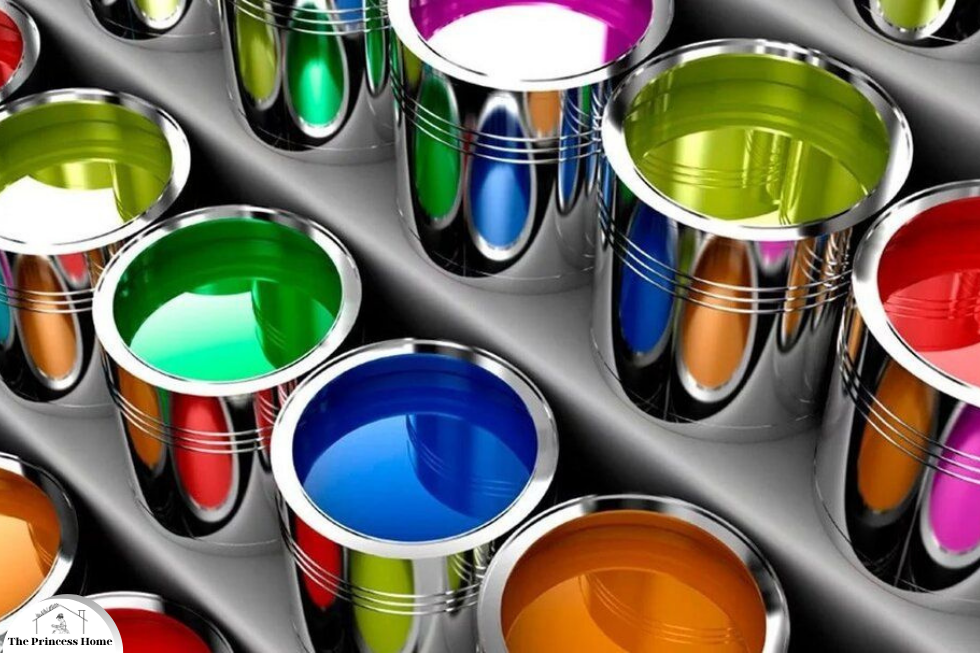
7*.Future Directions &Applications:
As our understanding of how materials interact with color continues to evolve, so too will the potential applications of this knowledge. From the development of more vibrant and durable pigments to the design of next-generation optical devices, the possibilities are endless. Furthermore, insights gleaned from studying natural phenomena like structural coloration could inspire innovative solutions in fields ranging from fashion and design to renewable energy and biotechnology.
The future holds vast potential for applying our evolving understanding of material-color interactions across diverse fields and applications.
1.Advancements in Color Science:
Pioneering a Spectrum of Possibilities
The realm of color science is undergoing a renaissance, fueled by a convergence of disciplines that promise to reshape the way we perceive and utilize color in myriad applications.
2.Innovations in Pigments and Dyes:
Enhancing Vibrancy and Sustainability
One avenue of exploration lies in the realm of pigments and dyes, where researchers endeavor to develop advanced formulations with heightened vibrancy, durability, and environmental sustainability. Additionally, novel synthesis methods and formulations are being explored to create colorants that offer superior color saturation, lightfastness, and resistance to fading or degradation. Moreover, efforts are underway to devise eco-friendly alternatives to traditional colorants, reducing environmental impact without compromising performance. These advancements not only promise to elevate the aesthetics of products and environments but also contribute to a more sustainable and eco-conscious future.
3.Optics and Photonics:
Illuminating New Horizons
The frontier of optics and photonics is ablaze with possibilities, propelled by the continued advancement of metamaterials and nanophotonics. Moreover, these materials, endowed with the ability to precisely control light-matter interactions, are revolutionizing the landscape of optical devices and systems. From ultra-compact photonic circuits to high-resolution displays and advanced sensors, metamaterials and nanophotonics are ushering in a new era of sensitivity and functionality. Additionally, their integration into existing technologies holds the promise of transforming fields such as telecommunications, imaging, and data storage, paving the way for unprecedented levels of efficiency and performance.
4.Biomimicry:
Nature’s Palette of Inspiration
Drawing inspiration from nature’s ingenuity, researchers are exploring biomimetic approaches to design and engineering, seeking to replicate the intricate nanostructures found in natural phenomena like structural coloration. By mimicking these nanostructures, scientists aim to develop materials and devices with unique optical properties and functionalities. These biomimetic solutions have the potential to drive innovation across diverse industries, from fashion and design to renewable energy and biotechnology. For instance, biomimetic coatings inspired by butterfly wings could lead to the development of self-cleaning surfaces or energy-efficient photovoltaic cells, harnessing nature’s wisdom to address modern challenges.
5.The AI Revolution:
Unleashing the Power of Data
The convergence of materials science, nanotechnology, and artificial intelligence (AI) is unlocking new frontiers in color research and applications. AI-driven computational methods are accelerating the discovery and optimization of novel materials with desired optical properties, enabling rapid innovation and customization. Machine learning algorithms are analyzing vast datasets of color and spectral information, extracting valuable insights to inform the design of next-generation materials and products. This synergy of disciplines promises to democratize access to cutting-edge color research and technologies, empowering industries and individuals to unleash their creative potential and realize a technicolor future.
In conclusion, the intersection of diverse disciplines is propelling color science into uncharted territories, where innovation and imagination converge to redefine the boundaries of possibility. Furthermore, from advanced pigments and optical materials to biomimetic design and AI-driven insights, the future of color is brimming with promise, offering a kaleidoscope of opportunities to enrich our world and enhance our experiences.
Conclusion:
The interaction between materials and color is a complex and multifaceted phenomenon that spans the realms of physics, chemistry, and human perception. Moreover, by exploring the underlying mechanisms of reflection, absorption, and structural coloration, we gain a deeper appreciation for the beauty and diversity of colors in the world around us. Whether through the creation of new materials or the study of natural phenomena, our quest to understand how different materials interact with color continues to inspire awe and curiosity.
Q1: How do materials influence the perception of color?
A: Materials influence the perception of color through processes such as reflection, absorption, and transmission of light. The properties of a material, including its chemical composition, surface texture, and structure, determine how it interacts with different wavelengths of light, ultimately influencing the color we perceive.
Q2: What role do pigments and dyes play in determining the color of materials?
A: Pigments and dyes are substances that impart color to materials by selectively absorbing certain wavelengths of light. Pigments are insoluble particles dispersed within a material, while dyes are soluble molecules that penetrate the material’s surface. By absorbing specific wavelengths of light and reflecting or transmitting others, pigments and dyes determine the perceived color of a material.
Q3: How does structural coloration differ from coloration due to pigments and dyes?
A: Structural coloration arises from the physical structure of a material rather than its chemical composition. Microscopic structures within the material interact with light, causing interference or diffraction effects that selectively amplify certain wavelengths. Unlike pigments and dyes, structural colors are often iridescent and can change depending on the viewing angle or lighting conditions.
Q4: What are some examples of materials that exhibit structural coloration?
A: Examples of materials that exhibit structural coloration include butterfly wings, bird feathers, certain marine organisms, and opals. These materials derive their vibrant hues from the interaction of light with their microscopic structures, resulting in iridescent colors that can shift depending on the viewing angle.
Q5: How do advancements in material science and nanotechnology impact the field of color research?
A: Advancements in material science and nanotechnology have led to the development of novel materials with unique optical properties. For example, metamaterials are engineered materials designed to exhibit properties not found in natural materials, such as negative refractive index or cloaking abilities. These materials hold promise for applications in optics, photonics, and display technologies, where precise control over light-matter interactions is essential.
Q6: What are some potential applications of understanding how different materials interact with color?
A: Understanding how different materials interact with color has numerous potential applications, including the development of more vibrant and durable pigments, the design of next-generation optical devices, and the inspiration for innovative solutions in fields such as fashion, design, renewable energy, and biotechnology. By harnessing the principles of light-matter interactions, researchers can create materials and technologies that enhance our lives and expand our understanding of the natural world.







